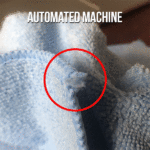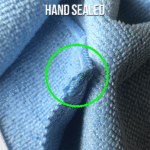Why are my microfiber cloths unravelling?
China has been the main source of microfiber cloths over the last ten years and as a country has a completely vertical manufacturing process. That being said, the labor rates from 2005 to 2016 have tripled in China and are now higher than most every major Latin country. In addition to increased wages, Blue Sky laws in China enforced by the Ministry of Environmental Protection have implemented greater restrictions on dye houses in China forcing increased pressure on pricing.
As market pressures are pushing pricing higher, manufactures who are selling microfiber on a large scale have automated their highest labor component of microfiber cloths, assembly. Automatic stitching machines like the one seen in this video eliminate the need for sewing operators and help suppress cost increases.




 Author: Hal Kanefsky
Author: Hal Kanefsky



